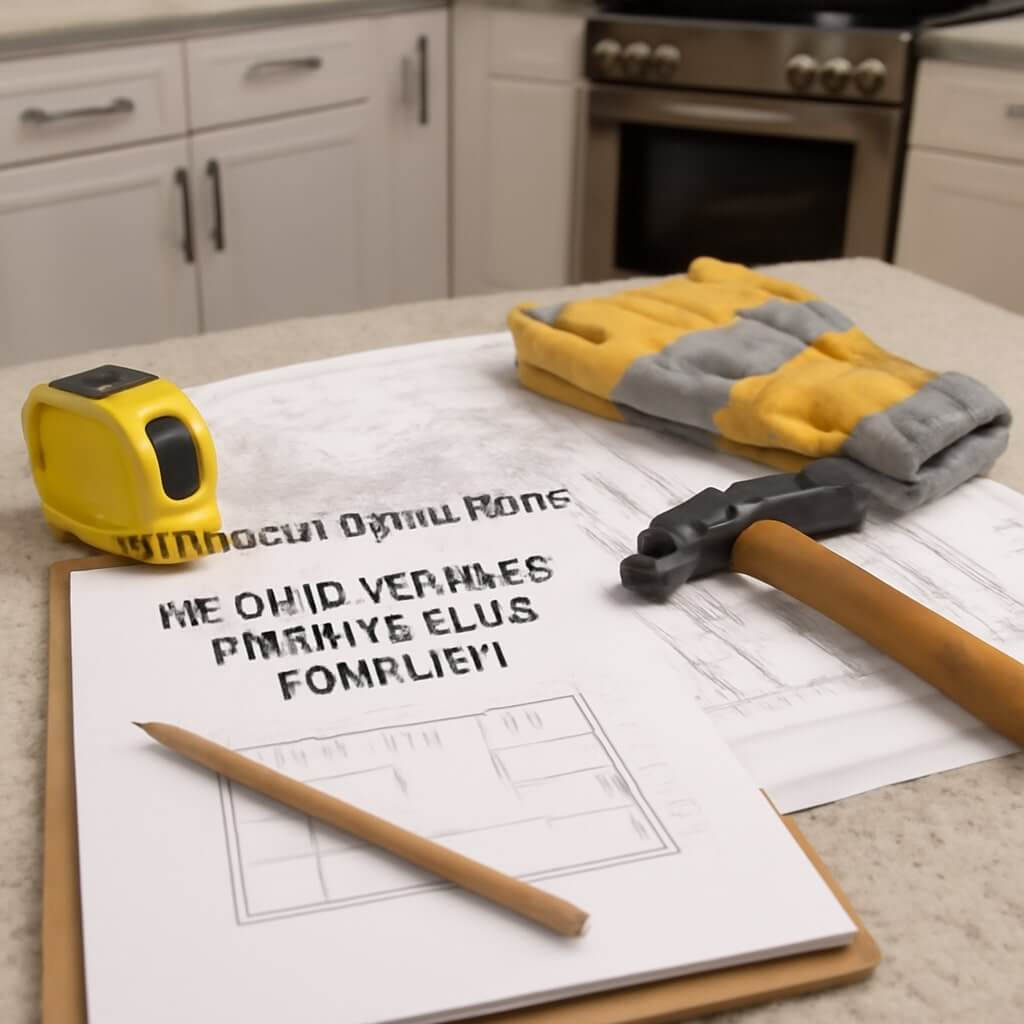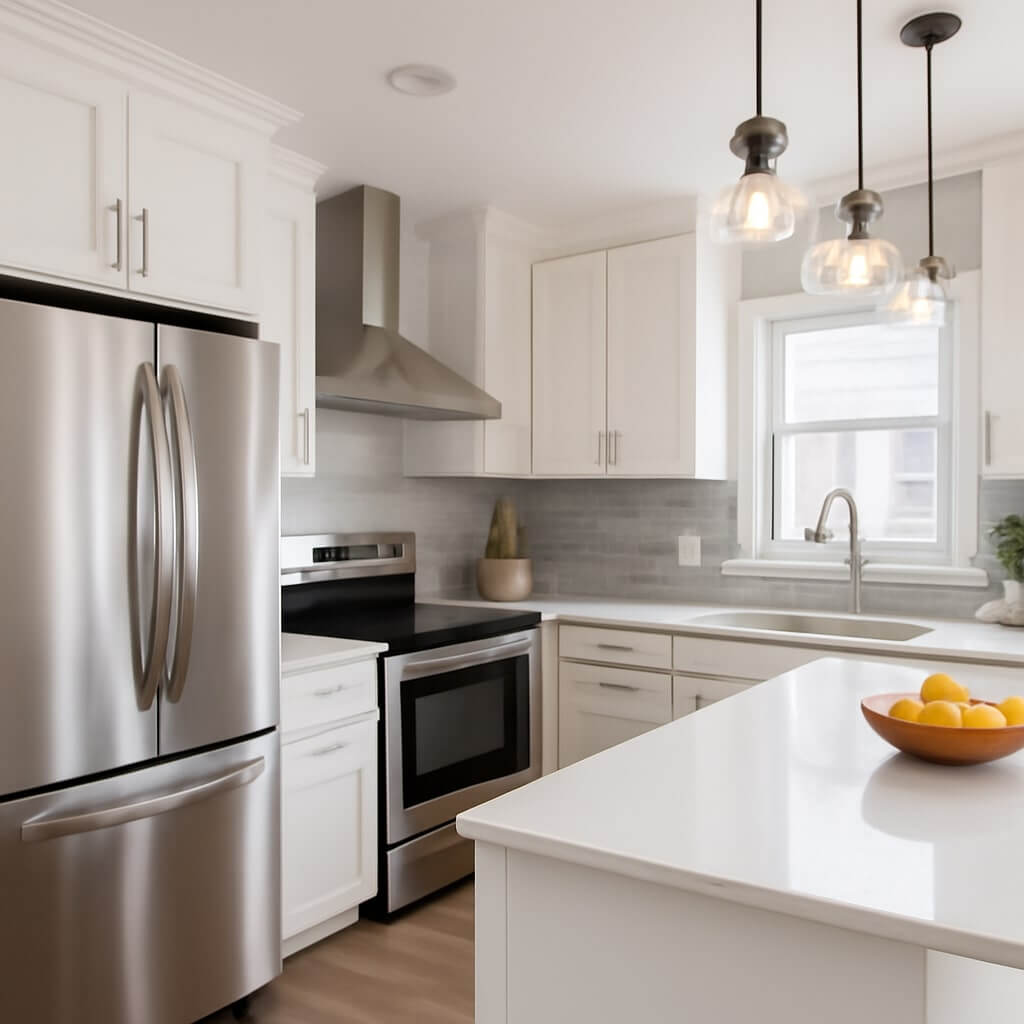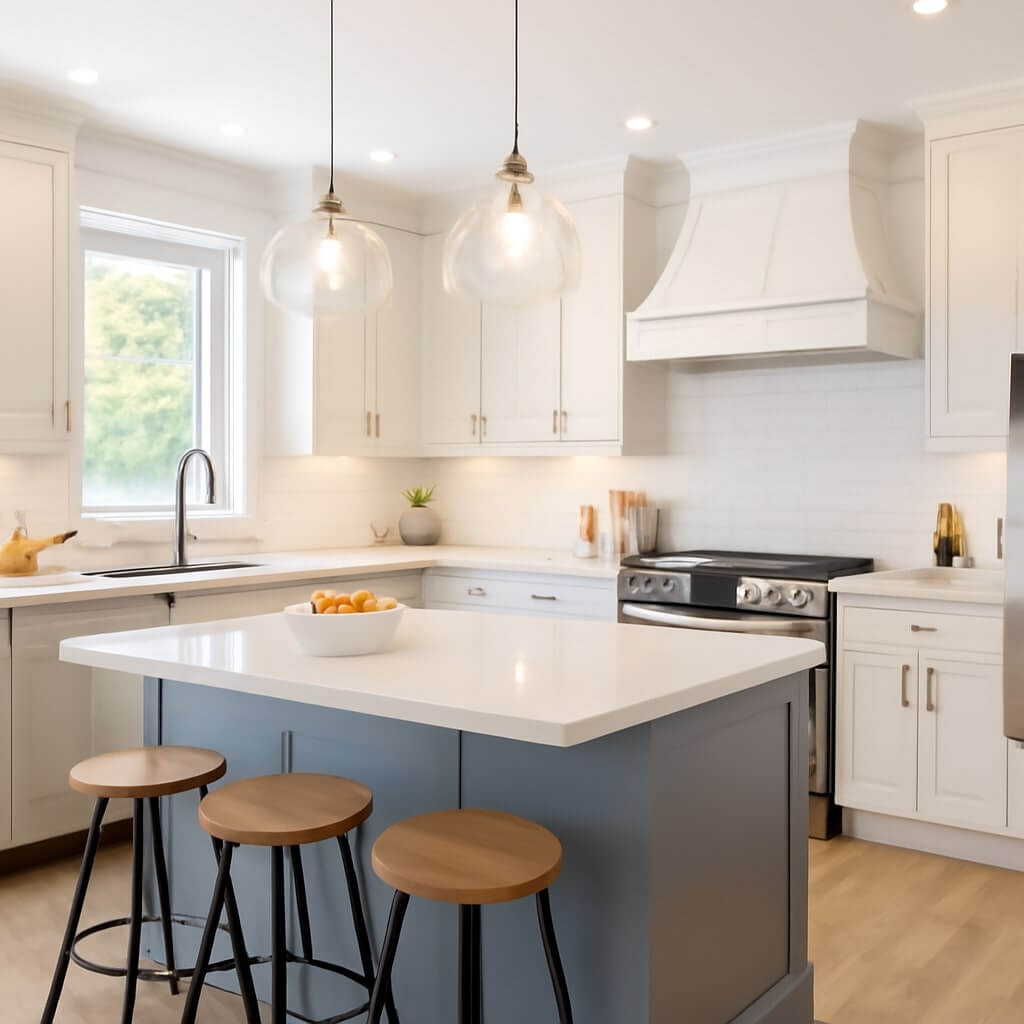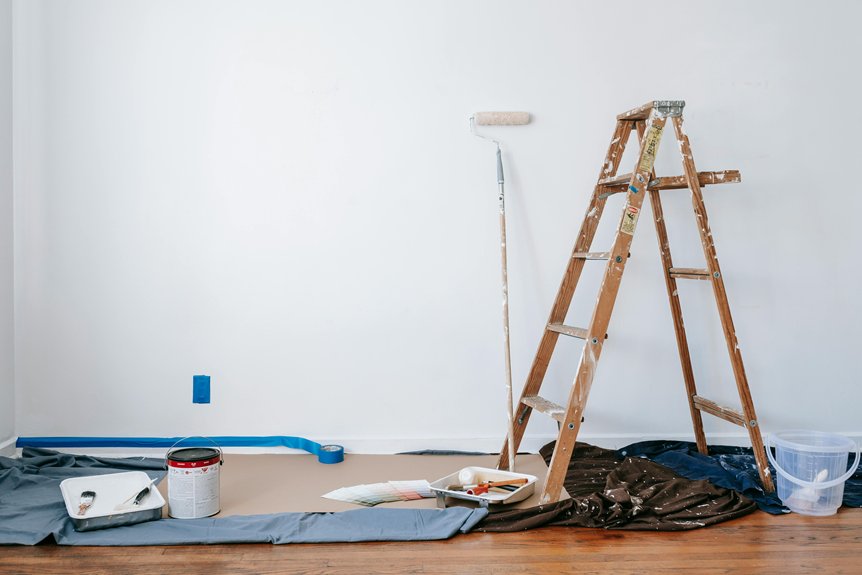When planning a kitchen remodel, it’s essential to have a well-structured project plan template. This template should clearly outline your renovation goals, set a realistic budget, and define your design vision. It’s also important to take into account timelines, contractor management, and potential living arrangements during the remodel. Understanding these components can set you up for success, but there’s more to take into account as you move forward. What other factors could impact your project?
Key Takeaways
- Renovation Priorities: Outline key areas of focus such as storage, appliances, and layout to guide the design process effectively.
- Budget Allocation: Detail overall budget, distinguishing must-haves from nice-to-haves, and include a contingency fund for unexpected costs.
- Design Vision: Define style preferences, functional needs, color schemes, and materials that align with the overall vision of the kitchen.
- Project Timeline: Establish milestone deadlines for each phase, prioritizing tasks and allocating realistic time frames for project completion.
- Contractor Management: Include criteria for selecting contractors, such as qualifications, references, and communication strategies to ensure project transparency.
Defining Your Kitchen Remodel Goals
What do you want to achieve with your kitchen remodel? Start by identifying your renovation priorities.
Think about the kitchen essentials that matter most to you—whether it’s more storage, upgraded appliances, or improved layout for entertaining. Clarifying your goals helps streamline the design process and guarantees your remodel meets your needs.
Identify your kitchen priorities—be it storage, appliances, or layout—to ensure your remodel aligns with your lifestyle needs.
Consider the functionality and aesthetics you desire, and don’t forget to envision how you’ll use the space daily. By aligning your goals with practical needs, you’ll create a kitchen that enhances your lifestyle and reflects your personal style.
Let your vision guide your decisions throughout the remodel.
Establishing a Realistic Budget
Creating a realistic budget for your kitchen remodel is essential to ensuring a smooth and successful project. Start by determining your overall budget allocation and sticking to it.
Accurate cost estimation will help you avoid unexpected expenses that can derail your plans.
- Identify must-haves versus nice-to-haves
- Factor in labor and material costs
- Set aside a contingency fund for surprises
Creating a Design Vision
When you start creating your design vision, it’s essential to define your style preferences—think about whether you lean towards modern, traditional, or something in between.
Next, identify your functional needs, like storage space and workflow, to guarantee your kitchen isn’t only beautiful but also practical.
Balancing aesthetics with functionality will set a solid foundation for your remodel.
Define Style Preferences
How do you envision your dream kitchen? Defining your style preferences is essential in creating a design vision that reflects your taste.
Consider how modern aesthetics can blend with your personal style, focusing on the overall vibe you want to achieve.
- Choose a color scheme that complements your home’s design.
- Decide on materials that resonate with your vision, like sleek metals or warm woods.
- Think about the layout that enhances both beauty and functionality.
Identify Functional Needs
While envisioning your dream kitchen, it’s important to identify your functional needs to guarantee the space works for your lifestyle.
Start by evaluating your daily activities—are you a frequent cook or do you prefer casual dining? This will influence your kitchen functionality.
Next, consider your appliance layout. Verify your refrigerator, stove, and sink are positioned for efficiency, minimizing movement while you cook.
Think about storage needs, too; adequate cabinetry can enhance usability.
Selecting the Right Materials
Choosing the right materials for your kitchen remodel can greatly impact both the aesthetics and functionality of the space.
Consider the following factors to make informed decisions:
- Material Durability: Opt for materials that withstand daily wear and tear, ensuring longevity.
- Color Selection: Choose colors that complement your overall design and create the desired ambiance.
- Maintenance Requirements: Select materials that are easy to clean and maintain, saving you time and effort.
Developing a Project Timeline
Creating a project timeline is essential to keep your kitchen remodel on track.
Start by setting milestone deadlines for each phase of the project, and then prioritize tasks based on their importance and interdependencies.
This approach will help you stay organized and guarantee everything flows smoothly from start to finish.
Setting Milestone Deadlines
As you begin your kitchen remodel, setting milestone deadlines is essential for keeping your project on track and ensuring timely completion.
By implementing effective milestone tracking, you can easily monitor progress and make necessary deadline adjustments when issues arise.
- Identify key phases, like design completion and cabinet installation.
- Allocate realistic time frames for each milestone to avoid delays.
- Regularly review progress and adjust deadlines as needed.
These steps help maintain focus and motivation throughout the remodel, ensuring your dream kitchen becomes a reality without unnecessary stress or setbacks.
Task Prioritization Strategies
Once you’ve established your milestone deadlines, the next step is figuring out which tasks need to be prioritized to keep your kitchen remodel running smoothly.
Start with task mapping to visualize all necessary actions. Then, create a priority matrix to determine which tasks are urgent and important.
Focus on high-priority tasks first, like ordering materials or hiring contractors, to prevent delays.
Don’t forget to reassess your priorities regularly; changes can occur during the remodel.
Hiring the Right Contractors
Finding the right contractors can make or break your kitchen remodel, so it’s essential to approach this step with careful consideration.
Start by researching contractor qualifications and ensuring they’ve the necessary licenses and insurance. Don’t underestimate the importance of clear project communication; it’s key to a successful partnership.
- Ask for references and check reviews.
- Conduct interviews to gauge their expertise and fit.
- Discuss timelines and budgets upfront.
Taking these steps will help you select the right contractors, ensuring your kitchen remodel goes smoothly and meets your vision.
Managing Permits and Regulations
After selecting the right contractors, the next step involves maneuvering through the maze of permits and regulations that often accompany a kitchen remodel.
Start by researching local building codes and zoning laws to guarantee regulatory compliance. Your contractors can guide you through the permitting process, helping you gather necessary documentation and submit applications.
Don’t overlook any deadlines or fees; staying organized is key. Keep communication open with your contractors and local officials to resolve any issues promptly.
Planning for Temporary Living Arrangements
While your kitchen is undergoing a transformation, it’s essential to plan for temporary living arrangements that keep your daily routine as smooth as possible.
Consider these key points:
- Explore temporary housing options like short-term rentals or staying with family.
- Set up essential utilities in your temporary space, such as electricity, water, and internet, to guarantee comfort.
- Plan your meals by utilizing a microwave or outdoor grill to minimize disruption.
Finalizing Your Project Checklist
As you near the end of your kitchen remodel, it’s essential to finalize your project checklist to guarantee nothing gets overlooked.
Start by scheduling final inspections to verify everything meets local codes and standards. Check off items like appliance installation, cabinet fittings, and countertop sealing.
Conduct thorough project evaluations with your contractor, addressing any unresolved issues or adjustments needed. Don’t forget to verify that warranties and manuals for new appliances are in hand.
Finally, complete a walk-through to confirm that your vision has come to life. A detailed checklist will help you celebrate your stunning new kitchen without worries!
Conclusion
To summarize, a well-structured kitchen remodel project plan is essential for a successful transformation. By defining your goals, setting a realistic budget, and creating a design vision, you’ll set the stage for your dream kitchen. Don’t forget to reflect on materials, timelines, and contractor management. With careful planning and regular progress reviews, you can navigate any unexpected challenges. Embrace the journey, and soon you’ll be enjoying the kitchen you’ve always wanted!




